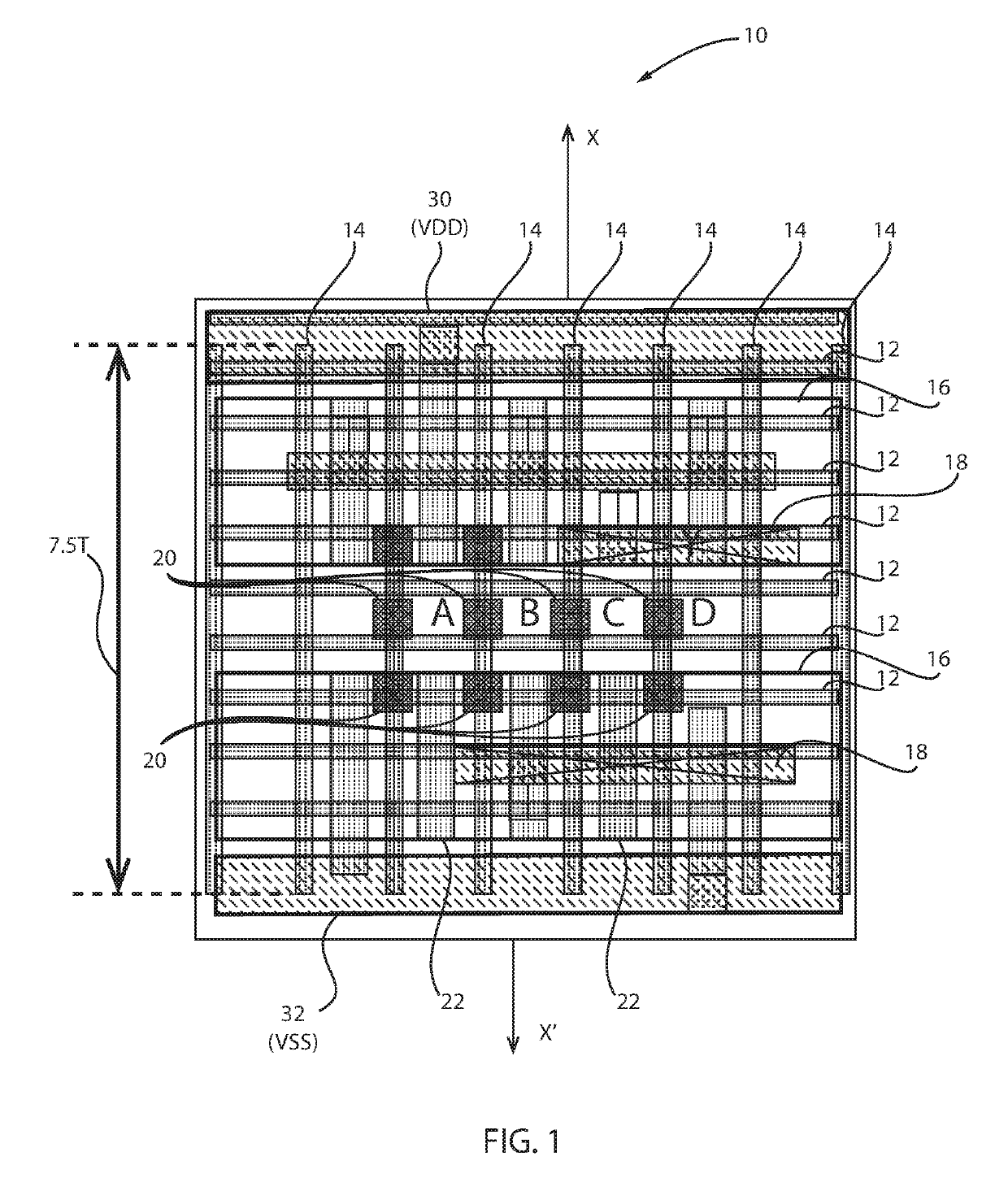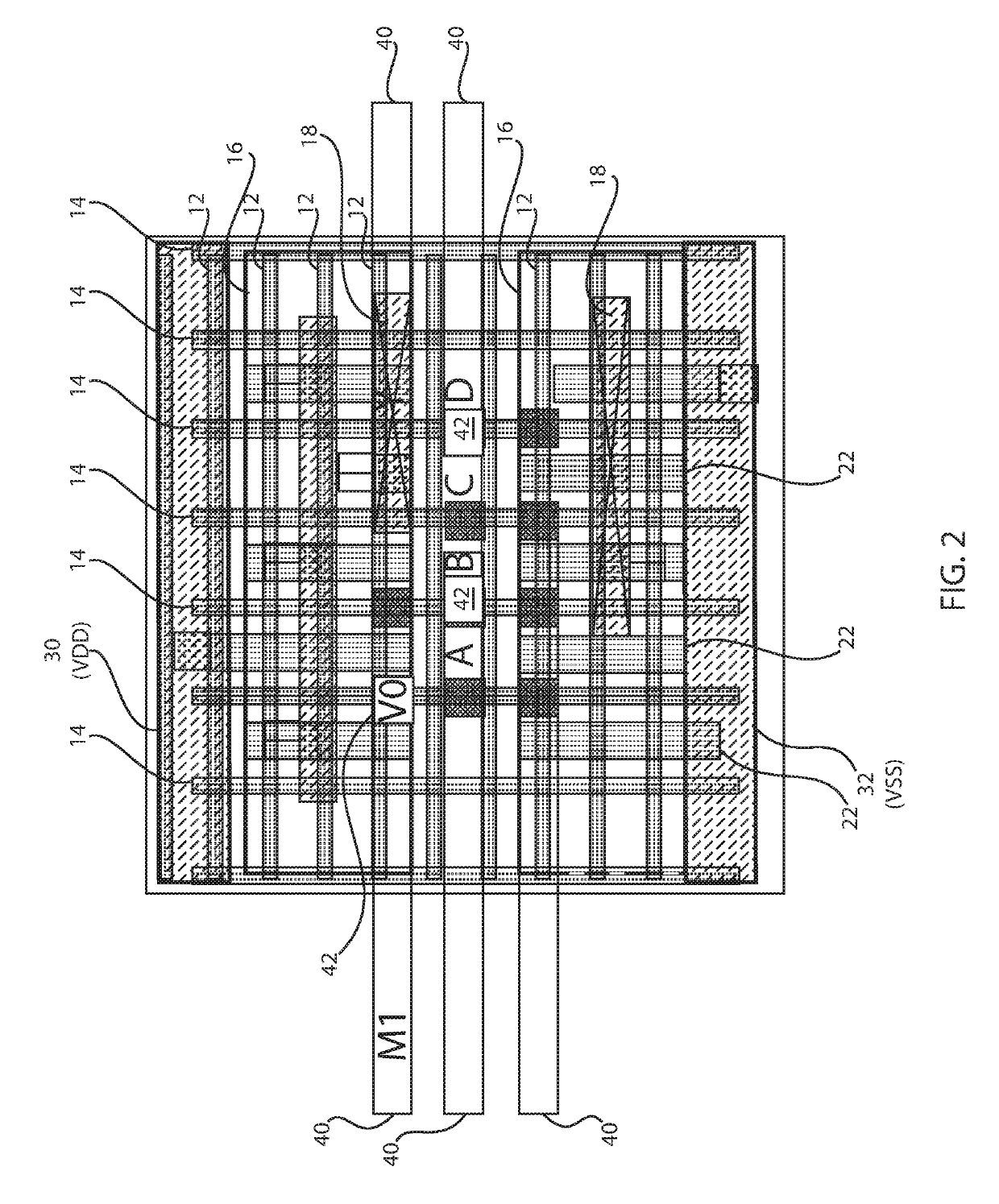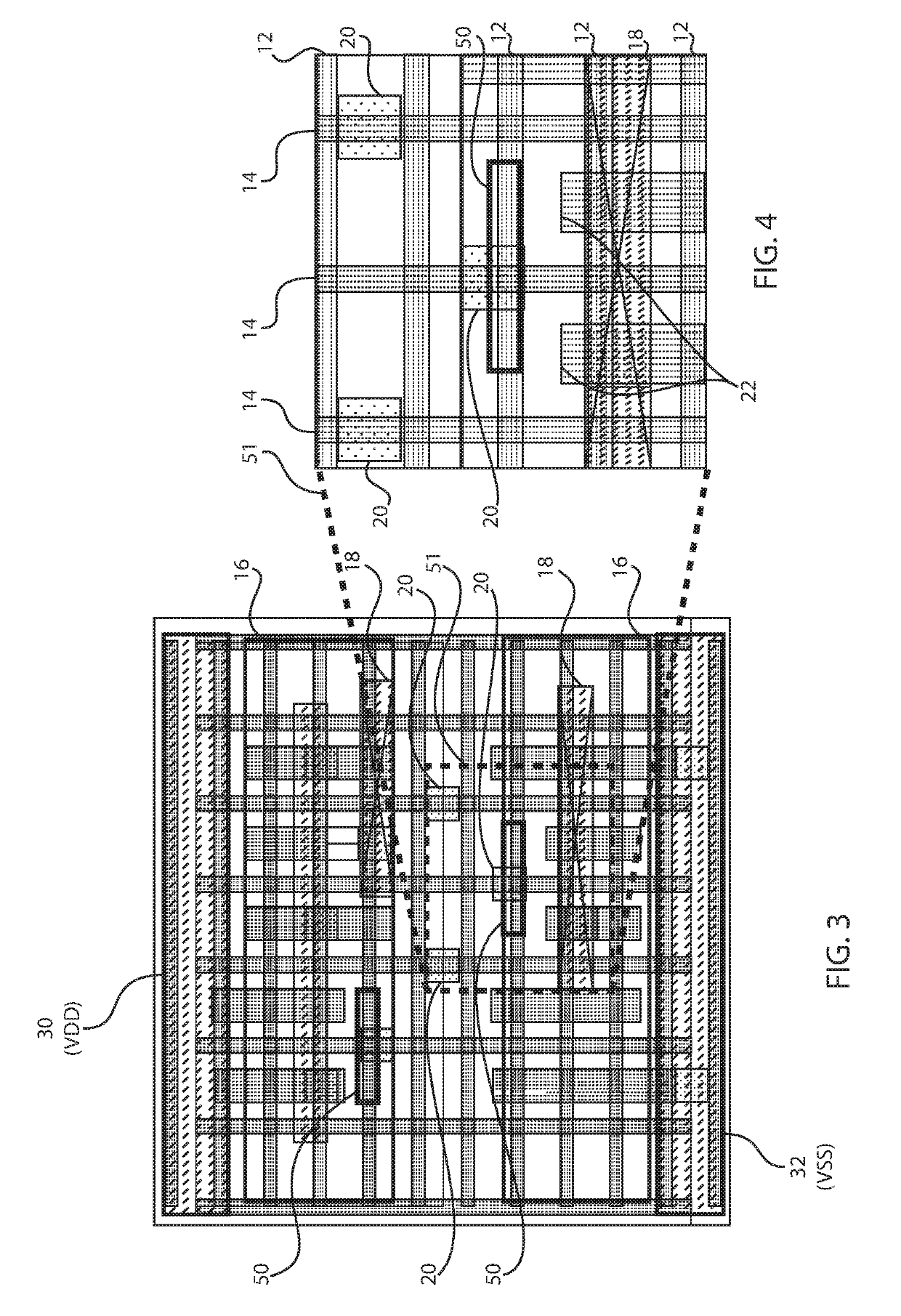Standard cell architecture with at least one gate contact over an active area
a gate contact and active area technology, applied in the field of semiconductor devices, can solve the problems of wide performance differences between devices, limited performance of standard semiconductor cell libraries, and approach producing additional disadvantages, so as to reduce the number of metal layers, improve the access of pins, and shorten the cell height
- Summary
- Abstract
- Description
- Claims
- Application Information
AI Technical Summary
Benefits of technology
Problems solved by technology
Method used
Image
Examples
Embodiment Construction
[0031]In accordance with an embodiment, a method is provided for forming a layout of a standard cell. The method includes forming a plurality of gate conductors, forming a plurality of active areas, and forming at least one gate contact (CB contact) within an active region of the plurality of active regions.
[0032]In accordance with another embodiment, a layout of a standard cell is provided. The layout of the standard cell includes a plurality of gate conductors, a plurality of active areas, and at least one gate contact (CB contact) formed within an active region of the plurality of active regions.
[0033]In one or more embodiments, a new and useful logic standard cell architecture is presented that advantageously leverages gate contacts over active regions to reduce the number of metals used while improving pin access. In addition, effective device width (i.e., number of fins) can be maximized to improve performance. AUXFIN is also introduced as a complete and useful design solution...
PUM
 Login to View More
Login to View More Abstract
Description
Claims
Application Information
 Login to View More
Login to View More - R&D
- Intellectual Property
- Life Sciences
- Materials
- Tech Scout
- Unparalleled Data Quality
- Higher Quality Content
- 60% Fewer Hallucinations
Browse by: Latest US Patents, China's latest patents, Technical Efficacy Thesaurus, Application Domain, Technology Topic, Popular Technical Reports.
© 2025 PatSnap. All rights reserved.Legal|Privacy policy|Modern Slavery Act Transparency Statement|Sitemap|About US| Contact US: help@patsnap.com



